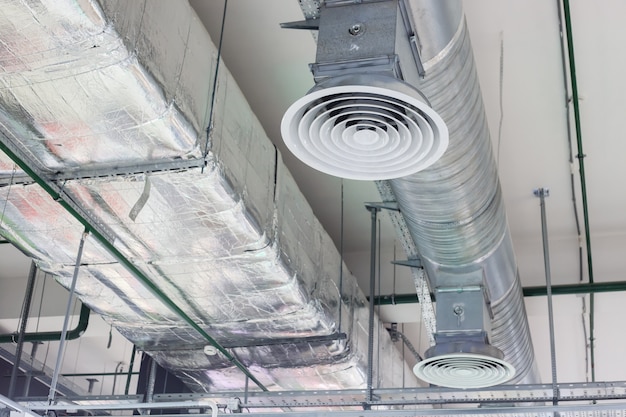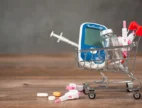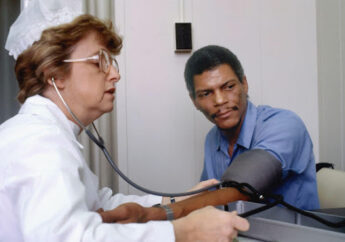How to Prevent and Mitigate COVID-19 in the Workplace
by Mashum Mollah Health Care Services Published on: 31 March 2022 Last Updated on: 07 November 2024

As the weather warms up and winter surges die down, many employers are looking to have more employees return to the office. And, of course, there are many industries, such as retail and foodservice, that have had employees working in person this whole time.
If you’re a manager looking to reduce the chances of COVID-19 transmission in the workplace, here are eight practical and effective steps you can take, from providing PPE to staggering work schedules:
1. Encourage everyone to get vaccinated

Getting vaccinated is one of the best things every individual can do to reduce their chances of catching COVID-19 (and if they do get it, being vaccinated will also help reduce the severity of their symptoms). While you might not have the power to mandate that all your employees get the vaccine, you can encourage them to do so by providing education literature.
Provide schedule flexibility so your employees can get the vaccine and booster and also take a day or two off if they end up experiencing vaccine side effects. Trust us. It’s a lot easier to let them take a couple of days off for the vaccine than to have them out for two weeks if they catch COVID.
2. Provide PPE for employees
Personal protective equipment (PPE) is another essential component for protecting your employees against viral transmission. KN95 masks are the most protective option and are an ideal choice for high transmission situations or long days. Disposable face masks are not as protective but may be sufficient for shorter interactions or low transmission situations (such as an employee mostly working alone in an office).
Nitrile gloves will also protect transmission via touch and are a great addition for high-touch scenarios such as food service. And, of course, it never hurts to have hand sanitizer stations in high-traffic areas to remind people to sanitize their hands.

3. Have workers stay home if they are sick
The COVID-19 pandemic has proven that the “if you’re well enough to work, you’re well enough to come into the office” attitude is a great way to get your entire staff infected at once. If your workers are experiencing symptoms, have them stay home until they are feeling better and get a negative test back. Coronavirus can quickly become quite serious, causing an employee to need chicago urgent care services, or urgent care services wherever they are based, so it’s important to keep them at home while they are suffering with symptoms!
Keep in mind that sometimes it may take several days after symptoms begin in order for there to be enough viral load to be detected by COVID-19 tests. Sometimes people may also test positive for COVID-19 without exhibiting symptoms; these people should keep testing and not return to the office until they get a negative test.
Related Resource: 6 Tips on How to Rebuild Your Business in Post COVID-19 Era
4. Maintain a regular cleaning routine
While COVID-19 is mostly transmitted through the air, it can also be transmitted through particles on surfaces like doorknobs and counters. Other common infectious diseases, such as the cold and flu, are also transmitted this way, so it’s very important to disinfect these surfaces on a regular basis.
Make sure that your maintenance crew is cleaning them regularly, and your staff might need to pitch in to wipe down high-touch surfaces more frequently. Do keep in mind that sanitizing surfaces is no replacement for wearing a mask, however.
5. Stagger workers’ schedules
Whenever possible, stagger workers’ schedules to minimize overlap in small spaces. Try to have them clock in and out at different times, so you don’t have a whole rush of people at once, and stagger their break times for the same reason. If you must have several people take a break at once, try to provide different break areas so they’re not having to cram into one space altogether.
If you work in an office, you may have even more flexibility over who is working in-person vs. who is working remotely. Consider having only part of the staff come in on any given day to keep office capacity down and further decrease the chances of transmission.
6. Moves things outdoors when possible
Being outdoors, where the ventilation is much better, significantly lowers your chances of transmission. Now that the weather is warming up, see if it’s possible to move work events outside in order to lower your chances of accidentally passing the virus to each other. Make sure to have a backup plan in case some bad weather comes up and makes being outside untenable (for example, moving the event inside and having everyone mask up in KN95s).
7. Maximize your ventilation system
Speaking of ventilation, having good airflow is another critical component of reducing viral transmission indoors. The Centers for Disease Control and Prevention provide guidelines for improving indoor ventilation in order to reduce the spread of COVID-19.
Keep in mind that upgrades to your ventilation system will need to be made in consultation with an HVAC professional who can advise you on your building’s specific capabilities. Some changes, such as opening windows or running fans, are no cost or low cost, while other upgrades will require a financial investment.
8. Give employees enough time to recover
If one of your employees does come down with COVID-19 — or any other kind of transmissible disease, such as the cold or flu — you need to give them enough time to recover completely before they come back to work.
The time for their symptoms to resolve can take anywhere from 7 to14 days, on average, and ideally, they should be able to provide a negative test before coming back to work. Pressuring your employees to come to work while they are still feeling ill greatly increases the chances that they will give it to other staff members, potentially causing a cascading problem.
Follow these steps to reduce the chances of spreading COVID-19 in your workplace, and remember that an ounce of prevention is worth a pound of cure when it comes to infectious diseases!
Read Also:





































































































